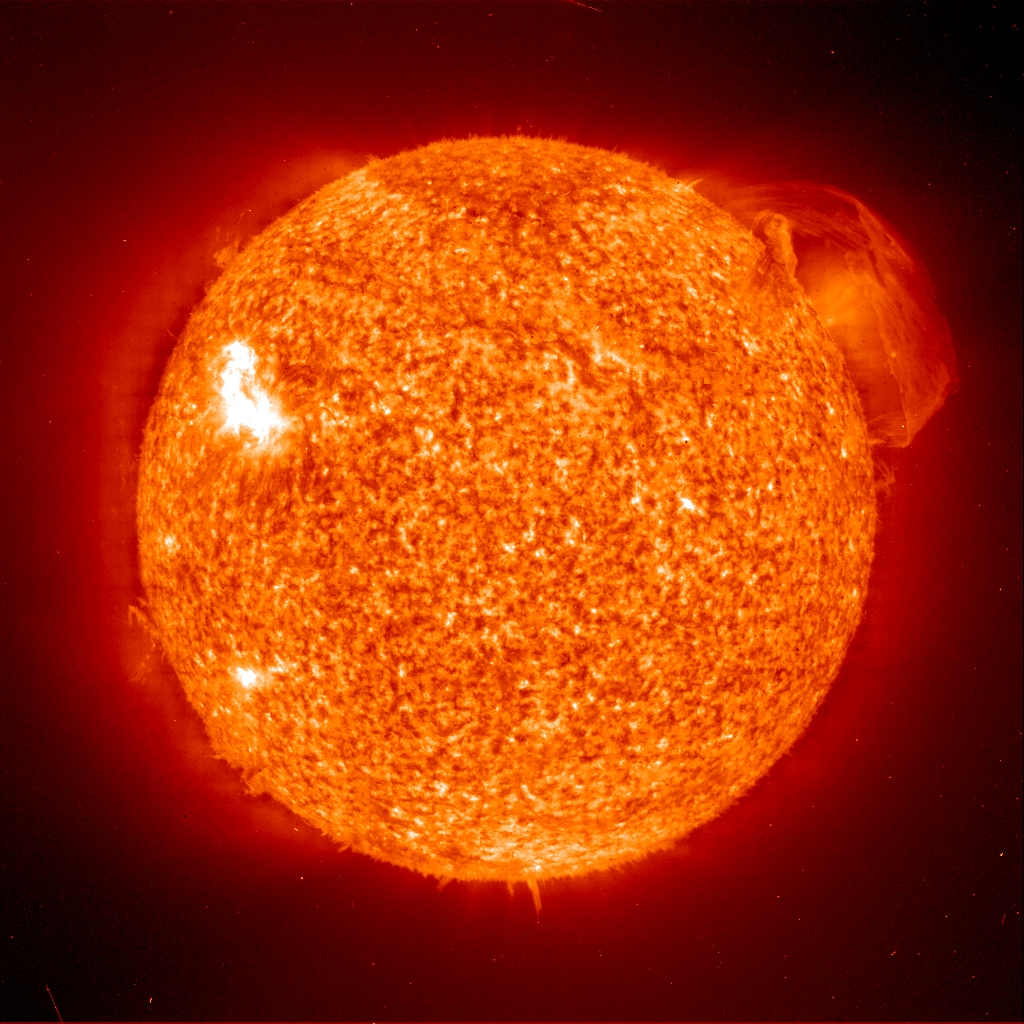Dark matter could be a Sun ingredient [NOT TRANSLATED]

• It is a possibility that this work shows the first evidence of the properties of the particle forming dark matter.
• The Large Hadron Collider in Geneva could confirm the theory.
The Sun still involves mysteries. In a new study, an international team of scientists has shown for the first time the existence of a type of dark matter that could explain most of the unknowns associated with the “problem of solar composition.” This problem and its solution have defied all attempts since its inception a decade ago. The team of scientists from the University of Durham (UK), Imperial College (UK) and the Institute of Space Sciences (IEEC-CSIC) have published their findings in the latest issue of the journal Physical Review Letters.
The internal structure of the Sun is known with a high degree of accuracy due to the study of oscillations observed on the surface, helioseismology, analogous to seismology on Earth, studying the Earth’s structure from seismic waves. But what is the chemical composition of the Sun? “No one knows for sure,” says Aldo Serenelli (IEEC-CSIC), “its determination is done by studying the solar spectrum, each present on the surface of the Sun chemical element manifested through a series of spectral lines ( areas of greater or lesser intensity) only “adds Serenelli. A decade ago, thanks to improvements in the techniques of spectroscopic analysis, surface chemical composition of the Sun was completely revised, resulting in a concentration of metals 40% lower than previously thought.
The review of solar chemical composition led to the emergence of the “problem of solar composition”: a series of disagreements about the internal structure of the sun between the predictions of theoretical models of the solar structure using spectroscopic measurements as a basis for predicting its structure, and properties of the Sun that can be deduced based on heliosismología techniques. The scientists saw a missing piece to complete the theoretical models of the structure of the Sun, but which one?
Dark matter as an explanation of the discrepancies
Dark matter makes up over 80% of matter in the Universe is invisible to the usual detectors, although its existence is widely agreed by scientists, has not yet been detected in terrestrial laboratories. Inside the Sun, the dark matter carries energy, absorbing energy in the central areas and traveling to more remote and cold regions, where they deposit their energy. Unlike ordinary matter, dark matter does not waste energy on the trip, because it interacts very weakly with ordinary matter.
Thus, theoretical models of the Sun that include dark matter inside predict changing its structure compared to standard solar models do not take into account the effect of such material.
In the case of asymmetric dark matter, scientists think it has inside the sun, a greater accumulation of dark matter occurs because not self-annihilating dark matter as ordinary. “Auto-kills in the sense that a particle interacts with itself and completely converted into energy (gamma rays, in this case), which maximizes their impact on solar structure,” explains Serenelli. Unlike previous works, scientists consider that a type of dark matter whose interactions with ordiary matter critically depends of the momentum change during collisions. Results show a “very good agreement” with the observations of the solar structure, offering the best solution to the problem today of solar composition.
A further interesting aspect of the work is connecting two apparently different problems: deficits in solar models and dark matter, the main component of matter in the universe. It’s a possibility that this work shows the first evidence of the properties of the particle forming dark matter. The properties of asymmetric dark matter proposed in the work are in agreement with measurements established in experiments with direct detection of dark matter and allow further explain certain anomalies observed in these experiments.
The launch of New Particle Collider in Geneva opens the way to confirm the feasibility of the theory proposed by researchers, “the search for dark matter asymmetric particle colliders has not been ruled out, so its existence can be confirmed or rejected soon, “concludes Serenelli. [NOT TRANSLATED]
